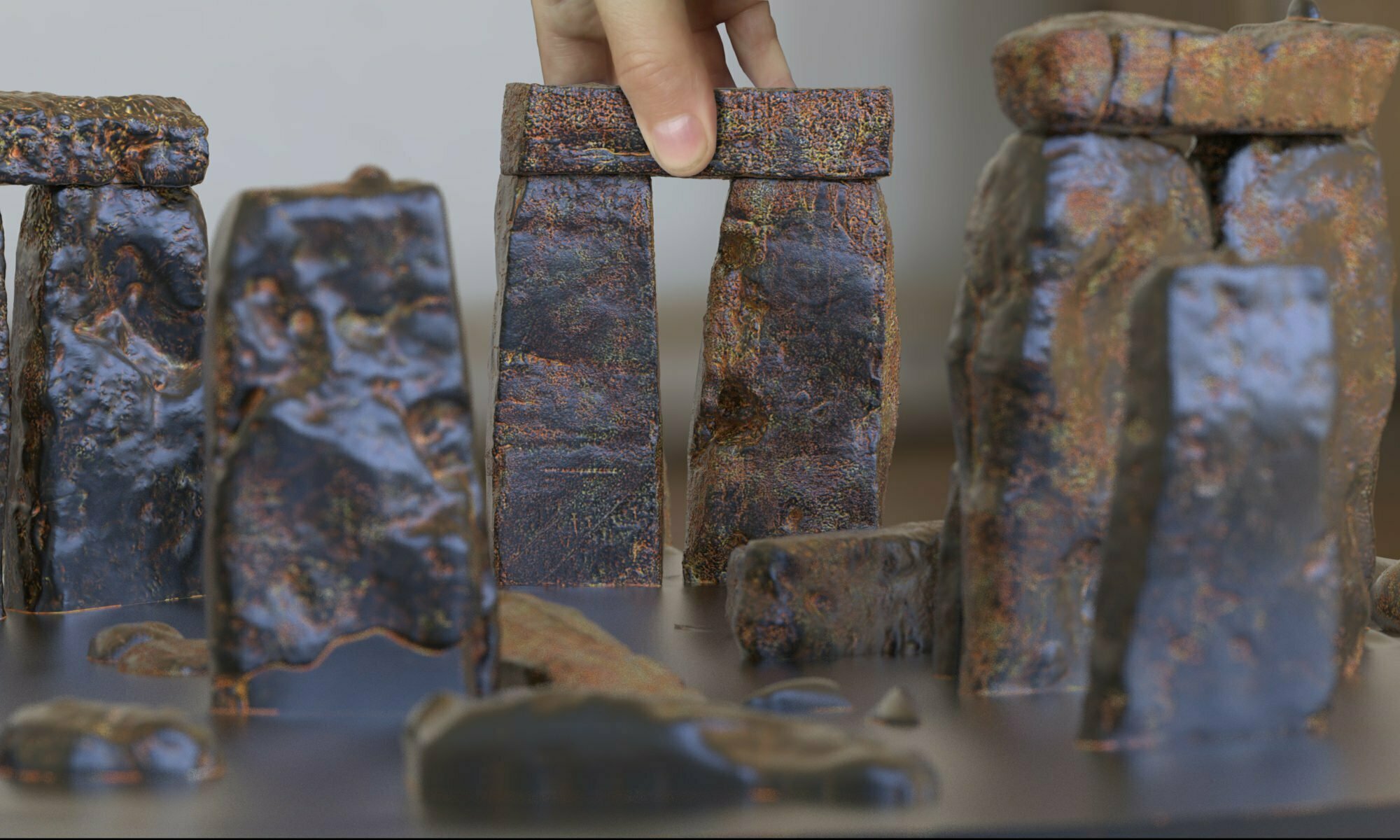Impossible photos of the three central Stonehenge trilithons
Based on super accurate models
Most importantly, I can stand far, far away and use a telephoto lens to get that orthographic look. In real life, I can’t. Other pesky megaliths are in the way. Or, I could stand close up, and use a fish-eye wide angle and distort the picture. Or somehow patch’n’stitch several photos together. I am able to light them in the best studio conditions, to bring out the important features. Probably impossible at the monument, in the wild outdoors.
Idealised reality
Colour pictures offer winter grunge. In damp weather, sarsen sweats and the extra water brings its foliage to life. Summer by contrast makes the stone look plain grey as the colour drains from the plant life. The quartzite sandstone also have plenty of iron which adds a beautiful, bloodred tinge, here and there, sometimes atop white calcite circled by green moss traced by lichens, on southern faces are light blue, on northern dark green. I saw, on my prototype models, after handling, iron’s rust and copper’s verdigris patina stays in the cracks and fissures, while the edges take on finger grease and shine. Perfect to reveal the texture, the graffiti, the contours of the builders’ tooling marks. So, I’ve developed the two great rendering materials that show off the hidden features, once colour has been stripped away: tainted copper and rusted iron.
The very, very highest quality
Printed on my own, state-of-the-art, Epson 600, these are hyper-detailed. Twice the resolution of regular giclée prints. Dots per inch are crucial: regular giclée prints would need to be A2 size to equal my A3. These are the prizewinners of detail.

